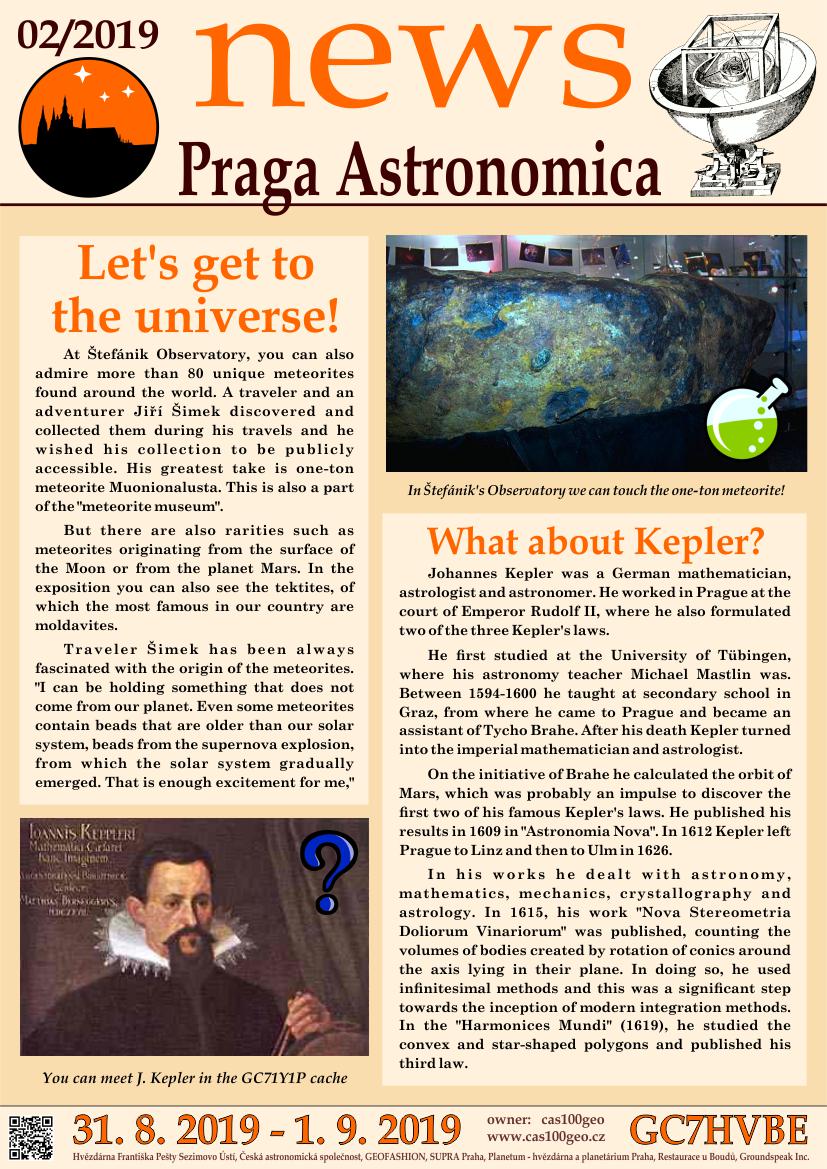NEWS no. 2
The second number begins with the wanderings of Praga Astronomica events and we still do not want to stop at the icon of MEGA!
Let's get to the universe!
At Štefánik Observatory, you can also admire more than 80 unique meteorites found around the world. A traveler and an adventurer Jiří Šimek discovered and collected them during his travels and he wished his collection to be publicly accessible. His greatest take is one-ton meteorite Muonionalusta. This is also a part of the "meteorite museum".
But there are also rarities such as meteorites originating from the surface of the Moon or from the planet Mars. In the exposition you can also see the tektites, of which the most famous in our country are moldavites.
Traveler Šimek has been always fascinated with the origin of the meteorites. "I can be holding something that does not come from our planet. Even some meteorites contain beads that are older than our solar system, beads from the supernova explosion, from which the solar system gradually emerged. That is enough excitement for me,"
What about Kepler?
Johannes Kepler was a German mathematician, astrologist and astronomer. He worked in Prague at the court of Emperor Rudolf II, where he also formulated two of the three Kepler's laws.
He first studied at the University of Tübingen, where his astronomy teacher Michael Mastlin was. Between 1594-1600 he taught at secondary school in Graz, from where he came to Prague and became an assistant of Tycho Brahe. After his death Kepler turned into the imperial mathematician and astrologist.
On the initiative of Brahe he calculated the orbit of Mars, which was probably an impulse to discover the first two of his famous Kepler's laws. He published his results in 1609 in "Astronomia Nova". In 1612 Kepler left Prague to Linz and then to Ulm in 1626.
In his works he dealt with astronomy, mathematics, mechanics, crystallography and astrology. In 1615, his work "Nova Stereometria Doliorum Vinariorum" was published, counting the volumes of bodies created by rotation of conics around the axis lying in their plane. In doing so, he used infinitesimal methods and this was a significant step towards the inception of modern integration methods. In the "Harmonices Mundi" (1619), he studied the convex and star-shaped polygons and published his third law.
